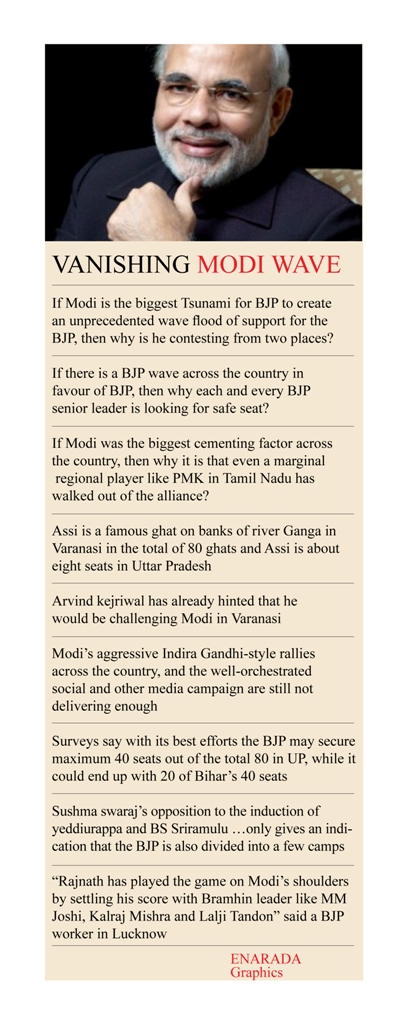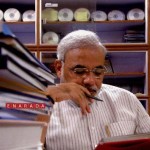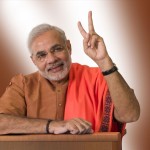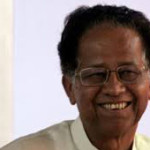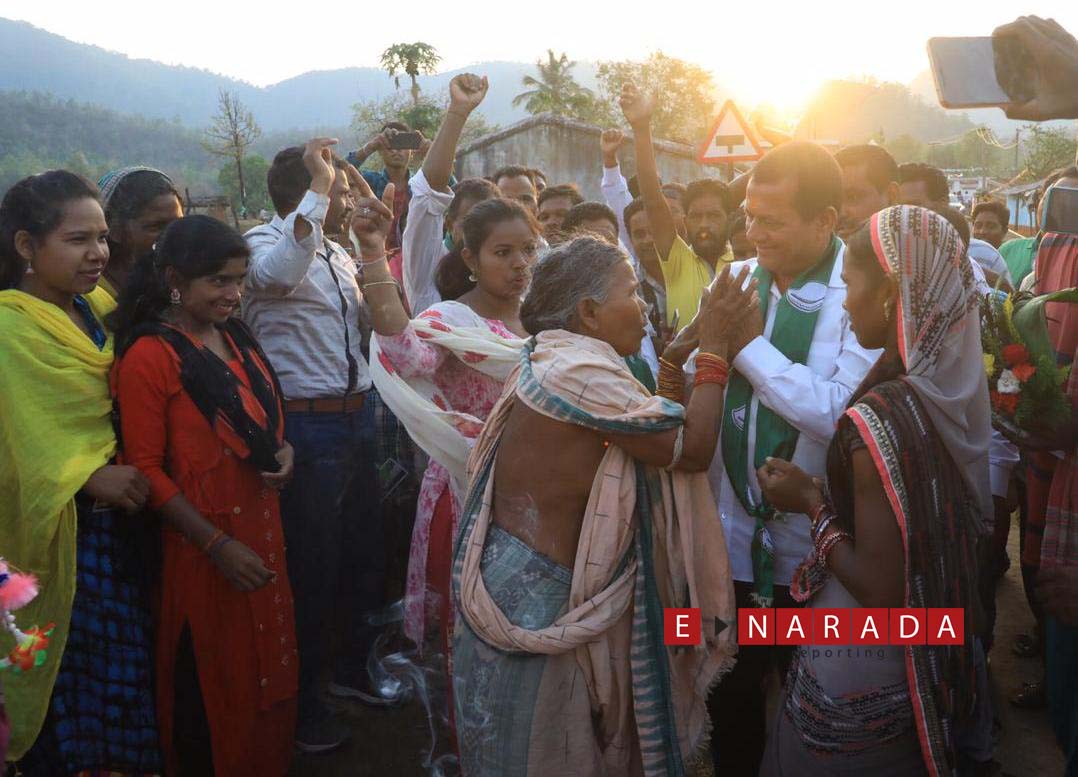ENARADA, New Delhi
By AJAY N JHA
It was Congress President Dev Kant Barua during the emergency (1975-77) who became the ultimate symbol of sycophancy by his 1974 proclamation that “India is Indira … Indira is India”. What happened to the Congress party in 1977 Lok Sabha polls is a part of Indian’s political history.
Almost four decades later, the saffron brigade is perhaps falling on the same lines by anointing “Modi is BJP and BJP is Modi”. That is visible all across the country. Bhopal to Bangalore or from Godhra to Guwahati, it is Modi and Modi’s posters littered all across.
While it may be a part of the BJP strategy to present Modi more in the style of American Presidential elections to garner voters support all across the country, it has already started a few eyebrows and a few senior BJP leaders who played important role in bringing BJP to this stage today, are feeling totally neglected and sidelined.
Moreover, the party’s decision to field Modi from the historical city of Varanasi is being described as “Bramhashtra” whose impact would be felt up to the shore of Rameshwaram and even kerala. Modi’s presence in Varanasi would also have a cascading impact across in Bihar as well where BJP is expecting to get at least 25 out of the total of 40 seats this time around. BJP workers are in a state of euphoria and jubilation, with the general feeling that this has changed the game in the region.
The BJP is now taking the slogan “har har Modi- ghar ghar Modi beyond the boundaries of this region and taking it nationally.
Various other slogans have been churned out by team Modi such as Bachha Mange Maa Ki Godi, Kashi Mange Narendra Modi, Kyun Pade ho Chakar me koi nahi hai Takar me.
The slogan among the lot is “Assi ki Rassakasi.” Assi is a famous ghat on banks of river Ganga in Varanasi in the total of 80 ghats and Assi is about eight seats in Uttar Pradesh.
According to a prominent commentator “The rising euphoria around Modi has some parallels in Amitabh Bachchan’s landing in Allahabad in 1984 to take on a mighty Hemvanti Nandan Bahuguna. But then Bachchan was only playing a small part, making a special appearance in a script written by his friend, then Prime Minister Rajiv Gandhi. He was only playing a character.”
In Modi’s case, he is the ultimate hero of the BJP, which can potentially grab power at the centre. While AAP leader Arvind kejriwal has already hinted that he would be challenging Modi in Varanasi and may try to win a few brownie points. But then the moot question that has been making the rounds, is whether he will be able to save his deposit.
Varanasi is a different city, people are more politically aware and have a penchant for dissecting the credentials of those talking to them. Kejriwal’s bravado and headline hogging tactic could boomerang on him. In any case, with the exception of 1967 Varanasi has never chosen anyone other than a BJP or Congress candidate. Kejriwal may make the poll spectacle by his theatrics and muck raking but the outcome is as good as known.
For the people of Varanasi, Modi’s decision to contest from Varanasi has skyrocketed popular expectation, with the belief that for they are finally getting someone who will be able to address the very basic needs of a city that is dying. The Gujarat model has suddenly become a cherished idea, which must be given a chance to be replicated in their own land. The holiest of holy Ganga must be cleaned and there seems to a certain belief among a section of the people that Modi can do it just like he cleaned and beautified Sabarmati.
Many voters of Varanasi feel that Dr MM Joshi did precious little to address to various sets of problem and he was hardly accessible. In any case, years of neglect by the powers that be to the real issues has made people believe in a man who is perceived to be a doer. The story of migrants from UP, particularly those engaged in weaving and diamond cutting in various cities of Gujarat, is also finding many ears in Varanasi.
In many ways popular aspirations in Varanasi is reflective of how Modi, the onetime poster boy of Hindutva, has transformed into a development messiah. There seems to be an overflow of enthusiast passions. Varanasi, considered the holiest of holy, abode of Lord Shiva has a national and international profile but it has not had a matching political profile.
The voters of Varanasi had Kamla Pati Tripathi to Parliament in the 1980s and Murli Manohar Joshi in 2009. In Modi as BJP’s prime ministerial candidate, people are looking at fulfillment of those aspirations or even taking it to greater glory.
There is no definite word on who could challenge Modi here from BSP but indications are that to counter Modi’s impact Mulayam could move to neighbouring Azamgarh, a place that became famous because it had once become a fertile ground for recruitment of the Indian Mujahideen. Azamgarh though currently represented by the BJP is a secularist must visit ground and big talking point. Mulayam’s candidature from there would keep the secular communal debate alive for there is quite a lot of talk as to how Muslims would respond to Modi’s candidature.
To his credit, the team Modi has played its most crucial card finally, deftly and subtly. “The symbolic value of his choice of Varanasi – home to temples, spiritualism, old world Hinduism and political Hindutva as well – is hard to miss. After working hard to dissociate himself from the image of a Hindutva hard liner all these years and running a long election campaign on the agenda of development and governance, he could not have afforded to be explicit about the reason behind his choice. But the message that goes out is loud and clear that he has not abandoned the Sangh Parivar universe, and he still banks heavily on it for votes, says a local political observer.
In this context, Modi’s two tweets make his resolve abundantly clear. His first tweet is “Grateful to the Party for giving me opportunity to contest the election from the holy city of Varanasi! An honour to contest from Varanasi”. His second tweet was “With blessings of Ganga Mata & Kashi Vishwanath, let us work towards success of Mission272+ & create a strong, vibrant & prosperous India”.
This can be interpreted in two ways. It could be described either as Modi’s overconfidence or a sign of desperation. Almost all political surveys published so far have suggested that the BJP would still fall short of 272 seats by a considerable margin even if it performs its best. The recent NDTV-Hansa survey, the biggest in the country so far, puts the party’s tally at 195. More generous surveys earlier have placed it in the territory of 220. A few BJP media managers have also been saying that by April end the Modi wave would increase manifold and the BJP would not need the support of any other political party as it would itself be well past 270.
Yet, the Modi wave, like everything else about Modi, looks overhyped. The fact remains that it not as much the love for Modi that has given a clear edge to BJP but the people’s hatred and apathy against the Congress ruled UPA which may bring in a substantial number of votes in Modi’s kitty by default. Modi’s aggressive Indira Gandhi-style rallies across the country, and the well-orchestrated social and other media campaign are still not delivering enough.
Secondly, the Kejriwal-led AAP has started punching big holes in the Gujarat growth story at a crucial moment. In a deliberate move, it has started attacking the media, raising serious moral-ethical questions about its role in promoting Modi. The party has been panned for taking on the media, but the attack has served its purpose. Moreover, Kejriwal’s decision to contest from Varanasi is another well- planed move to put some more muck on Modi and damage his halo as the development messiah. What Congressmen could not do in these years is being done by Kejriwal and his team and that would certainly put doubt in a section of voter’s mind who have been on the fringe.
In the face of these factors apart from being acutely aware of the limitations of Modi’s outreach programme and the emerging challenges, the party has gone for aggressive social engineering in battleground states like Bihar and Uttar Pradesh in the last few weeks. Surveys say with its best efforts the BJP may secure maximum 40 seats out of the total 80 in UP, while it could end up with 20 of Bihar’s 40 seats. This is bad news for a party claiming to be riding a wave. This explains the frenzied effort of the party to rope in as many caste-based smaller parties as possible.
Also, portraying Modi in caste terms – as an OBC – in these states betrays signs of lack of confidence. The caste card having been played, the BJP is back to pandering to its original loyal base: the Hindu vote bank. This was always part of the party’s two-pronged strategy in UP – while the Modi goes around the nook and corner of the state talking growth, development and neutral topics, the Sangh Parivar silently works towards polarizing votes on communal lines.
According to a BJP insider, the presence of Amit Shah, the trusted aide of Modi, in the state meant that the party aimed to replicate its Gujarat success formula in UP too. “The announcement of Modi’s name from party stronghold Varanasi was perhaps in the original game plan decided way back in July last year. The news of resentment by sitting MP and senior leader Murli Manohar Joshi was a ploy to keep the media interest alive on Modi’s moves. His arrival in Varanasi is expected to energise the Sangh Parivar cadre across the state and provide the party the last-minute big push towards numbers it expects” he said.
Modi’s supporters would be careful about being overt about the communal card. During his last visit here in December, he visited the Sankatmochan and Kashi Vishwanath temples, seeking blessings of the deities. A few more visits to temples dotting the city would convey the message to the target group.
But then there is a flip side to it as well and that may not be to the liking of Modi supporters. One is that, all is not well within BJP even as the RSS top brass appears to have taken the indirect command of running the poll agenda for Modi. Senior like LK Advani are not happy with the way the announcement of his candidature from Gandhinagar was delayed. This amounted to a severe insult to the man who had given a new lease of life to Modi post Godhara riots and prevailed upon then Prime Minister Vajpayee to let him continue.
Secondly, Sushma swaraj’s opposition to the induction of yeddiurappa and BS Sriramulu has already been in public domain. It only gives an indication that the BJP is also divided into a few camps.
Third, a section of BJP workers have also started admitting in private that the Bramhin voters are also getting miffed the way Rajnath Singh and Modi have ganged up to marginalize them. “Rajnath has played the game on Modi’s shoulders by settling his score with Bramhin leader like MM Joshi, Kalraj Mishra and Lalji Tandon” said a BJP worker in Lucknow.
While one can understand the Varanasi issue to move away MM Joshi to Kanpur for Modi, there seems to be little rationale for Rajnath Singh to contest from Lucknow on Lalji Tandon’s seat and throw Kalraj Mishra to Devaria.
Tandon is still looking for a seat to contest while BJP leader Arun Jaitley would be contesting elections for the first time from Amritsar in place of Navjyot Singh.Sidhu.
In the same way, Vinay katiar’s Faizabaad seat has been given to Lallu Singh. The biggest question begging a credible answer is if there is a BJP wave across the country in favour of BJP, then why each and every BJP senior leader is looking for safe seat?
If Modi is the biggest Tsunami for BJP to create an unprecedented wave flood of support for the BJP, then why is he contesting from two places? Even Vajpayee did not contest from two seats.
If the RSS and BJP leadership was so keen on sending all the elder leaders to Rajya Sabha, then why some of them were given Lok Sabha tickets and some were not?
If Modi was the biggest cementing factor across the country, then why it is that even a marginal regional player like PMK in Tamil Nadu has walked out of the alliance?
The BJP and the sangh pariwar has to answer these points as well.
Above all, the 2014 poll campaign would perhaps go down in the history of India as one of the most contentious, and a vicious election campaign where many celebrated journalists and commentators appear to have become too committed to a politician’s cause.
Pratap Bhanu Mehta, through his column in Indian Express raises a valid point when he says that “The danger is slightly different: the enchantment of partisanship may breach all boundaries and engulf any sense of proportion or objectivity. The partisan contagion may corrode professional roles and judgment. This corrosion comes in two forms. In the most egregious cases, it leads to selective reporting, misplaced importance to certain facts, sometimes even falsehoods. In a more subtle form, the worry is not falsehood but a certain monomania: where journalists become more like lawyers for a prosecution or a defence. Their facts may not be wrong in a literal sense, but their vocation is reduced to exactly the same partisan contest in politics: take down the opponent, no matter what.”
This malaise was confined only to social media sites where there has been a no holds barred debate, accusations and counter-accusations and so on. Unfortunately, that has started becoming visible in print, web and television media also where it is difficult to find neutral and well informed commentators putting forward their views in a balanced manner.
(Posted on March 16, 2014 @ 10.45pm)
(Ajay N Jha is a veteran journalist from both Print and Electronic media. He is Advisor to Prasar Bharti. The views expressed are his personal. His email id is Ajay N Jha <ajayjha30@gmail.com> )
The views expressed on the website are those of the Columnists/ Authors/Journalists / Correspondents and do not necessarily reflect the views of ENARADA.



